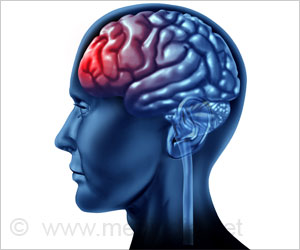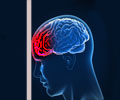Doctors are beginning to get answers to the question that every parent whose child has had a TBI wants to know: What will my child be like 10 years from now?

‘Patients with mild to moderate brain injuries are two times more likely to have developed attention problems, and those with severe injuries are five times more likely to develop secondary ADHD.’





Patients with mild to
moderate brain injuries are two times more likely to have developed
attention problems, and those with severe injuries are five times more
likely to develop secondary ADHD. These researchers are also finding
that the family environment influences the development of these
attention problems.- Parenting and the home environment exert a powerful influence on recovery. Children with severe TBI in optimal environments may show few effects of their injuries while children with milder injuries from disadvantaged or chaotic homes often demonstrate persistent problems.
- Early family response may be particularly important for long-term outcomes suggesting that working to promote effective parenting may be an important early intervention.
- Certain skills that can affect social functioning, such as speed of information processing, inhibition, and reasoning, show greater long-term effects.
- Many children do very well long-term after brain injury and most do not have across the board deficits.
But predictors of recovery following TBI, particularly the roles of genes and environment, are unclear. These environmental factors include family functioning, parenting practices, home environment, and socioeconomic status. Researchers at Cincinnati Children's are working to identify genes important to recovery after TBI and understand how these genes may interact with environmental factors to influence recovery.
- They will be collecting salivary DNA samples from more than 330 children participating in the Approaches and Decisions in Acute Pediatric TBI Trial.
- The primary outcome will be global functioning at three, six, and 12 months post injury, and secondary outcomes will include a comprehensive assessment of cognitive and behavioral functioning at 12 months post injury.
- This project will provide information to inform individualized prognosis and treatment plans.
Using neuroimaging and other technologies, scientists are also learning more about brain structure and connectivity related to persistent symptoms after TBI. In a not-yet-published Cincinnati Children's study, for example, researchers investigated the structural connectivity of brain networks following aerobic training. The recovery of structural connectivity they discovered suggests that aerobic training may lead to improvement in symptoms.
Advertisement
- Across a series of randomized trials, online family problem-solving treatment has been shown to reduce behavior problems and executive dysfunction (management of cognitive processes) in older children with TBI, and over the longer-term improved everyday functioning in 12-17 year olds.
- Web-based parenting skills programs targeting younger children have resulted in improved parent-child interactions and reduced behavior problems. In a computerized pilot trial of attention and memory, children had improvements in sustained attention and parent-reported executive function behaviors. These intervention studies suggest several avenues for working to improve short- and long-term recovery following TBI.
Advertisement















